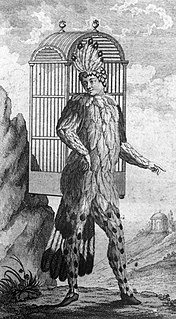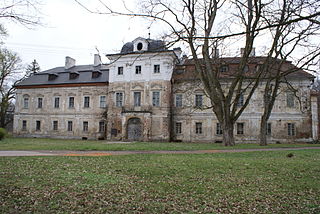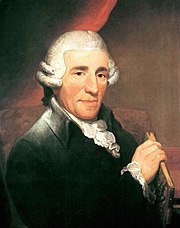
Franz Joseph Haydn was an Austrian composer of the Classical period. He was instrumental in the development of chamber music such as the piano trio. His contributions to musical form have earned him the epithets "Father of the Symphony" and "Father of the String Quartet".

A Singspiel is a form of German-language music drama, now regarded as a genre of opera. It is characterized by spoken dialogue, which is alternated with ensembles, songs, ballads, and arias which were often strophic, or folk-like. Singspiel plots are generally comic or romantic in nature, and frequently include elements of magic, fantastical creatures, and comically exaggerated characterizations of good and evil.

Albert Christoph Dies was a German painter, engraver, and biographer most noted for his biography of Joseph Haydn, although it is now considered sentimental and not entirely accurate. As an artist, he is also not very well-regarded.

Emanuel Schikaneder, born Johann Joseph Schickeneder, was a German impresario, dramatist, actor, singer, and composer. He wrote the libretto of Wolfgang Amadeus Mozart's opera The Magic Flute and was the builder of the Theater an der Wien. Peter Branscombe called him "one of the most talented theatre men of his era".

The composers Wolfgang Amadeus Mozart and Joseph Haydn were friends. Their relationship is not very well-documented, but the evidence that they enjoyed each other's company and greatly respected each other's work is strong, and suggests that the elder Haydn acted, in at least a minor capacity, as a mentor to Mozart. Six string quartets by Mozart are dedicated to Haydn, the "Haydn" Quartets.
Mathias Haydn was the father of two famous composers, Joseph and Michael Haydn. He worked as a wheelwright in the Austrian village of Rohrau, where he also served as Marktrichter, an office akin to village mayor.
Count Morzin was an aristocrat of the Holy Roman Empire during the 18th century. He is remembered today as the first person to employ the composer Joseph Haydn as his Kapellmeister, or music director. The first few of Haydn's many symphonies were written for the Count.

Theater am Kärntnertor or Kärntnertortheater was a prestigious theatre in Vienna during the eighteenth and nineteenth centuries. Its official title was Kaiserliches und Königliches Hoftheater zu Wien, the "Imperial and Royal Court Theater of Vienna".
Georg August von Griesinger was a tutor and diplomat resident in Vienna during the late 18th and 19th centuries. He is remembered for his friendships with the composers Joseph Haydn and Ludwig van Beethoven, and for the biography he wrote of Haydn.

The Theater in der Leopoldstadt was an opera house in Vienna, founded in 1781 by Karl von Marinelli, following the Schauspielfreiheit by Joseph II in 1776. The 19th-century summer stage called the Thaliatheater was also managed by the Leopoldstadt.
The Gesellschaft der Associierten was an association of music-loving noblemen centered in Vienna and founded by Baron Gottfried van Swieten in 1786. The society sponsored concerts, often reviving music from the past, and also commissioned new works.
The Lame Devil may refer to:

The Morzin Palace is a country estate in Dolní Lukavice, Czech Republic.







